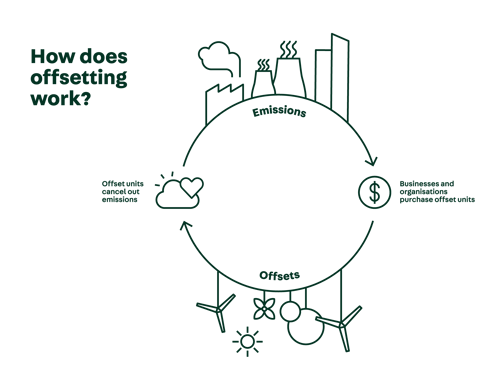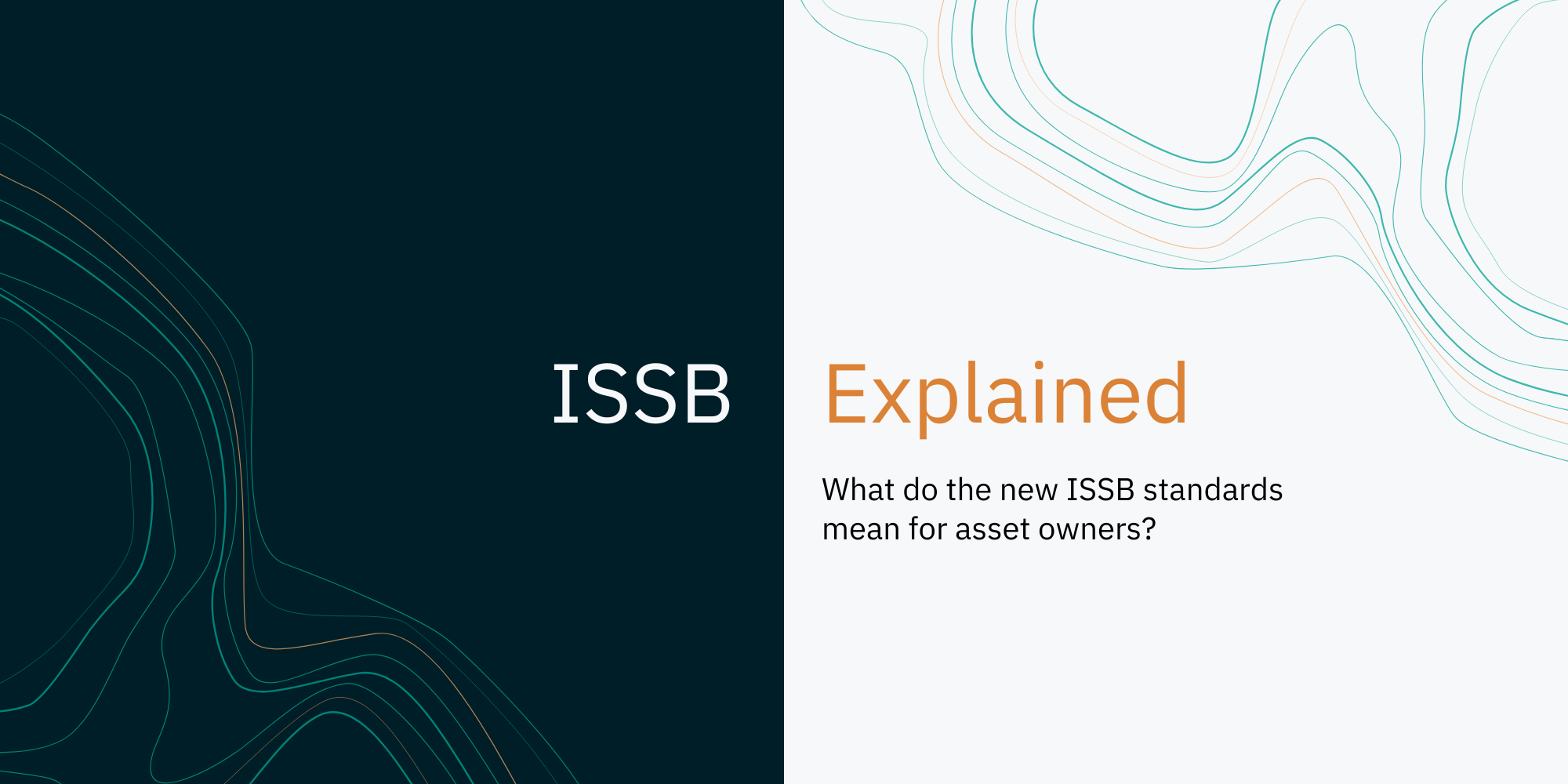When outsourcing any tasks or services, paying to ensure high quality and insurance of action is critical, and therefore worth the extra expense. If your organisation is looking to purchase and finance carbon offset projects as part of your journey to carbon neutrality, or net zero emissions, paying the extra dollar for verified carbon offsets to ensure credibility and efficacy is necessary. In this article, we will explore what a verified carbon offset project is and why supporting these projects allows for meaningful climate action that is both recognisable and reputable.
Carbon Offset Industry Overview
Carbon offsets (also known as carbon credits) are generated by projects where CO2 has been avoided, reduced, or removed from the atmosphere. Common projects include renewable energy generation such as wind farms and forest regeneration through tree planting or avoided deforestation. These projects generate carbon credits for every tonne of CO2-e that avoided, reduced, or removed which can then be purchased by external organisations.
Purchasing carbon credits (one tonne of carbon dioxide equivalent or t CO2-e = one carbon credit) is a common form of climate action for organisations. The purchase of these credits enables organisations to indirectly reduce the impact of the greenhouse gas emissions they release into the atmosphere. Every credit purchased indirectly offsets emissions from the organisation purchasing and retiring them.

Source: Climate Active
As the number of organisations looking to achieve carbon neutrality increases, demand for carbon offsets is also increasing. This means that over time the availability of verified carbon offsets will start to become diluted unless new projects and technologies come online.
With an increased demand for carbon offsets, many new unregulated registries and offset projects are being created. There is an increase in the variety of offsets that an organisation can now choose from; however, not all carbon offsets are created equally. Offsets available from unregulated registries may not meet the stringent requirements that projects from established registries must adhere to. This has subjected the carbon offset industry to scrutiny, where offsetting emissions is being labelled as greenwashing.
Recently, there has been an insurgence in carbon offsets from tree planting projects. While planting trees may support the additional removal of CO2-e from the atmosphere, unless removals are quantified using an approved methodology and verified against a recognised standard, these projects may not be correctly tracked and monitored. There is a risk that carbon removals may not be occurring to the extent that project proponents may state.
If an organisation wishes to be certified carbon neutral and to remove itself from greenwashing accusations, choosing and paying for verified carbon offset projects that are registered under an internationally recognised standard is non-negotiable.
Internationally recognised carbon offsets include: Verified Carbon Units (VUCs) from the Verra Registry, Australian Carbon Credit Units (ACCUs) from the Australian Clean Energy Regulator, and Gold Standard registered carbon credits.
What do you pay for when you are buying verified carbon offsets?
When selecting project(s) to purchase carbon offsets from, it is imperative that the project is producing eligible and verified carbon offsets. Eligible carbon offset projects must meet all registry requirements including requirements to prevent double counting of reductions and additionality to ensure the project is going above and beyond business-as-usual activities.
Projects must quantify all emission reductions under an approved methodology or protocol. If a quantification methodology or protocol for the project type does not exist, the project is not eligible to create carbon credits. Projects must further be verified by an external third party and are subject to ongoing review. The verification process occurs during the lifetime of the offset project which is generally 7 years (depending on the registry and project type) and ensures the emissions reductions, removals, or avoidances created by the project are ongoing and occurring.
So why do you pay?
To ensure reliability and actuality.
When looking to purchase carbon credits it is vital to make sure they are coming from reputable registries that have a rigorous registration, quantification, and reporting process in place. Without this, the ability to track and know for certain that the project is actively generating offsets and not just acting as a temporary solution is hard to decipher.
Much like you pay an accountant to do your books and analyse your financial data to ensure an accurate representation of your financial position is founded, when looking to offset emissions, paying for a service that guarantees expected results is critical.
When you pay for verified carbon offset projects your organisation is granted with:
- Ensured efficacy: When projects are registered under a reputable standard, the verification process will ensure that that the emissions reductions created by the carbon offset projects are occurring. This ensures that the offsets you are purchasing are actively avoiding, removing, or reducing emissions.
- Certifiable carbon offsets: When your organisation offsets its carbon footprint using credible offsets you are progressing towards carbon neutral certification. To be certified under a credible protocol your organisation must offset its carbon through a project that is registered under the specified standard. For example, the Pathzero protocol only accepts projects issued under the Gold Standard, Verra Registry, or by the Australian Clean Energy Regulator.
- Credibility and market trust: Greenwashing is a serious accusation that has the potential to ruin the reputation of an organisation. As the importance and value of the sustainability and carbon industry grows, the need for businesses to produce reputable records of their climate action is required. Therefore, purchasing carbon credits from reputable registries is imperative.
Selecting carbon offset projects
Many providers of carbon neutrality and carbon management platforms offer carbon offset options as part of their service. When selecting what provider to go through it is important to ensure they offer verified carbon offset projects as part of the defined requirements of their protocol.
As mentioned above, Pathzero provides access to Verra and GoldStandard carbon offset projects through our carbon marketplace. Pathzero accepts these projects as they are verified and adhere to the key principle of best practice as defined within the Pathzero Protocol. To learn more about Pathzero, our protocol, and carbon neutral certification, head to the main section of our website, or read our protocol here.
When selecting what verified carbon offset project to fund it is important to note that the costs range depending on project type. There is a variance of factors that make certain projects more expensive than others, including, geographical location, project type, co-benefits, and registry. When selecting a project, it is advised to choose one that aligns best with the values of your organisation.
Paying for a service that guarantees the expected results, no matter the industry is critical. Without this, the credibility of your actions and your organisation becomes compromised. When you pay for verified carbon offset projects, you are paying for ensured efficacy, the ability to continue on to achieve a certifiable carbon neutral status, and trust that your organisation is credible.
If you're looking to credibly offset your residual emissions, or become a carbon neutral company, book a consultation with us today.







